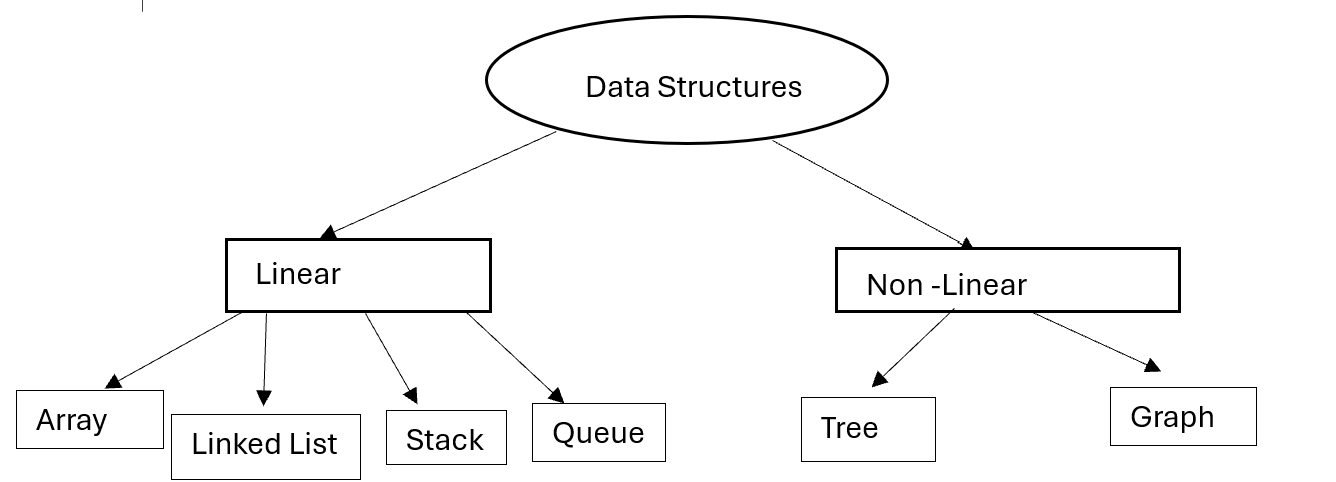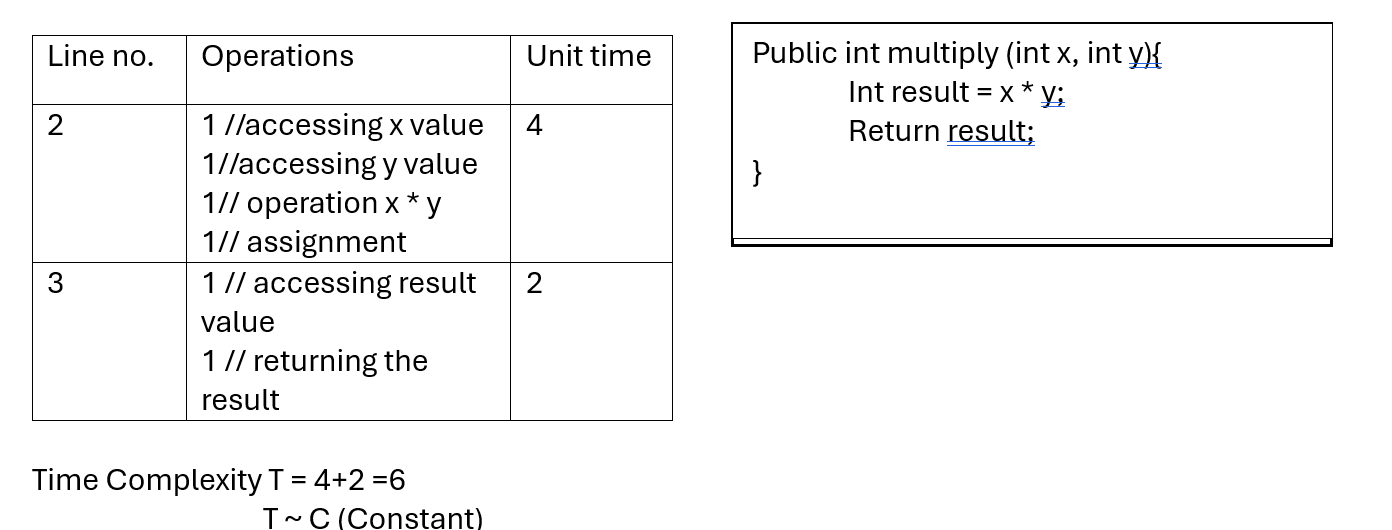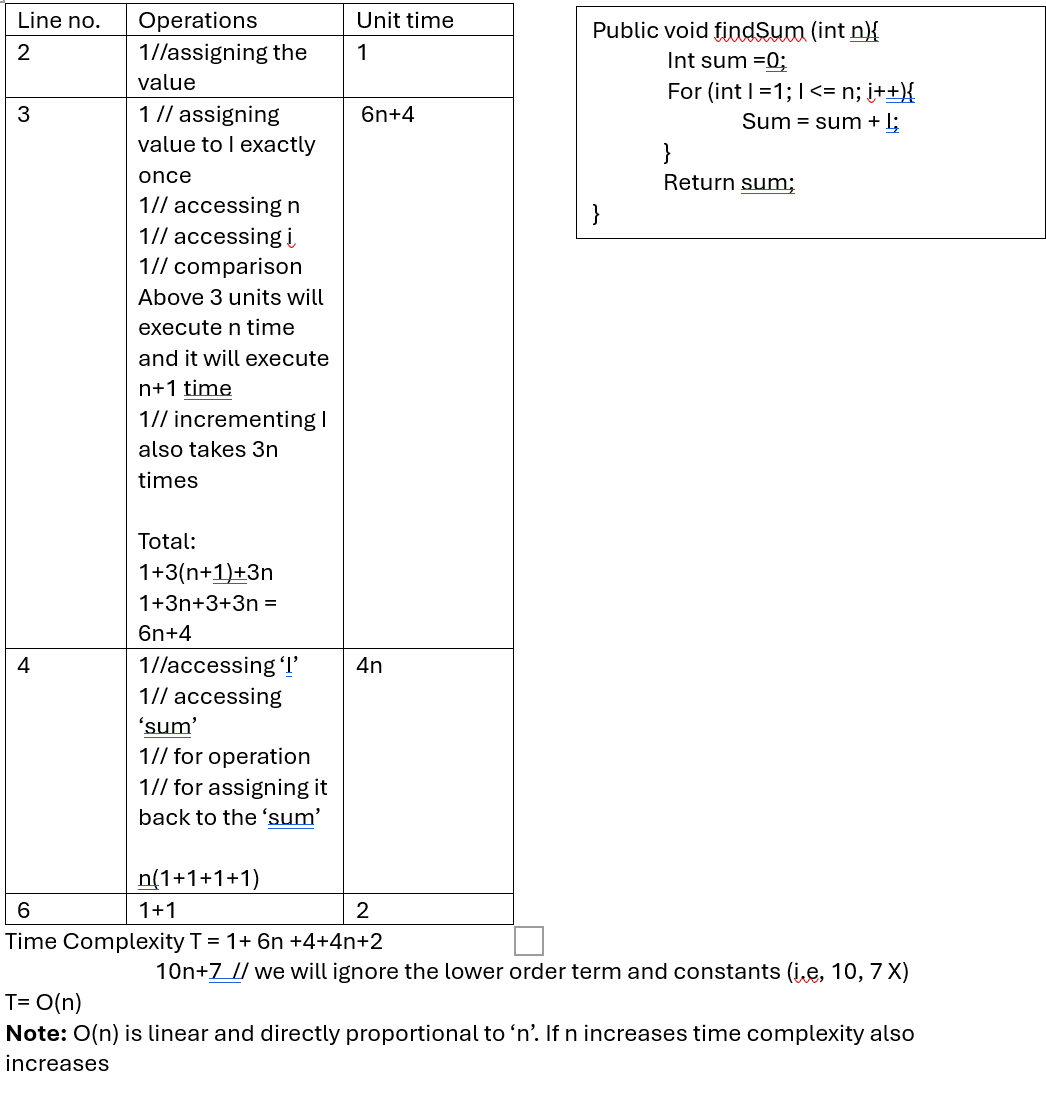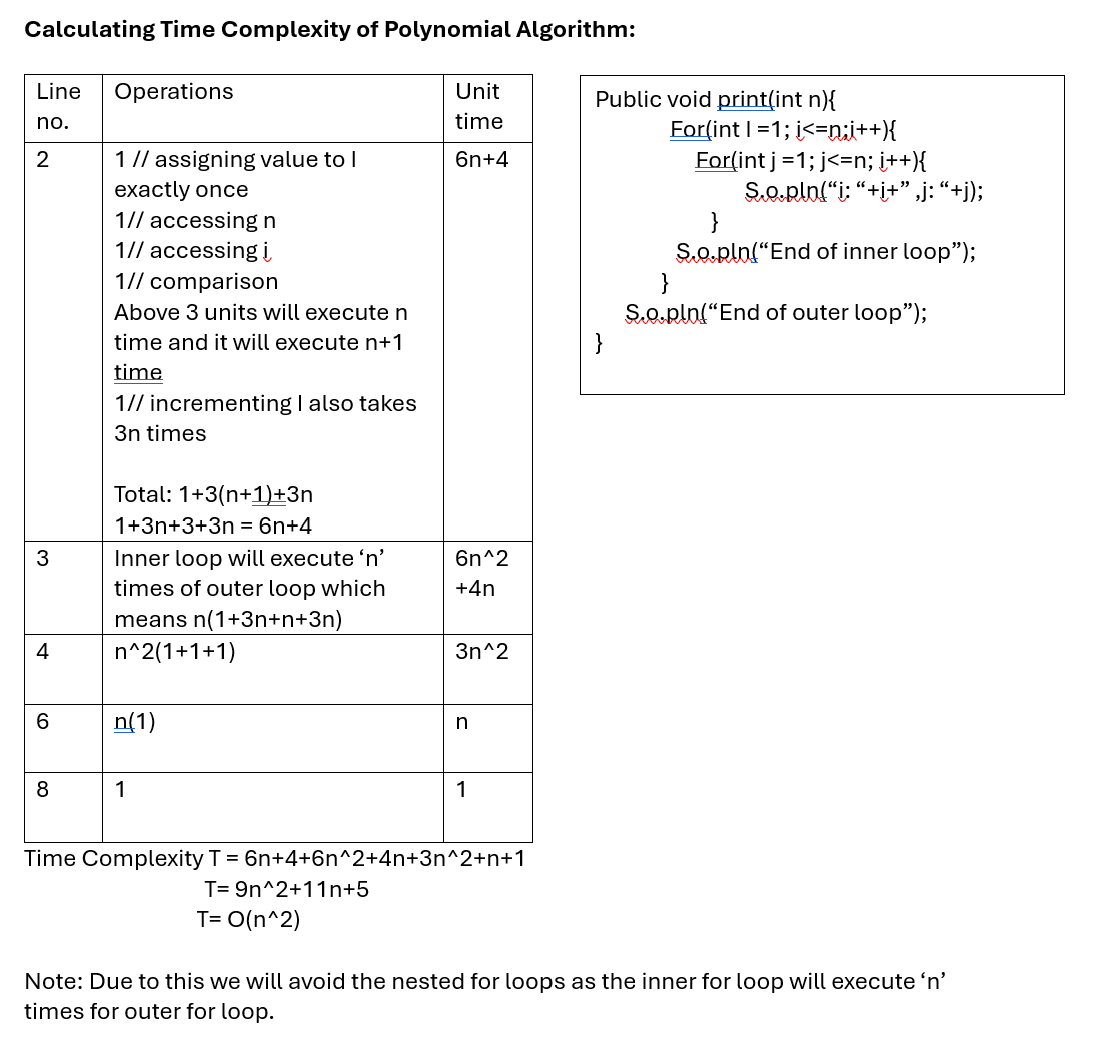"Mastering the Foundation: A Beginner's Guide to Data Structures and Algorithms"
 Sri
Sri
Data Structures and Algorithm:
Organize the data in a way that is easy to handle and perform actions on.
Types of Data Structures:

Introduction to Algorithms: An algorithm consists of instructions to carry out a task or solve a problem (this is a theoretical way of explaining).
Let's consider an algorithm to calculate the sum of 'n' natural numbers.
There are two different ways to write it.
Way 1
public int findSum (int n){
return n*(n+1)/2;
}
Way 2
public int findSum (int n){
Int sum =0;
for(int i = 1; i<=n;i++){
sum = sum +i;
}
return sum;
}
Out of these two, we need to decide which is better based on time and space complexity.
Way 1 is better than Way 2 because the number of iterations is fewer and it requires less space to store the code.
A mathematical model that aids us in determining the Time and Space Complexity is called Asymptotic Analysis of an Algorithm.
Asymptotic Analysis of an Algorithm: assists in assessing the performance of an Algorithm concerning input size and its growth.
Asymptotic Notations aid us in identifying:
Best Case
Average Case
Worst Case
Types of Asymptotic Notations: for performing runtime analysis of an algorithm.
Omega(Ω) Notation
Big O (O) Notation
Theta (θ) Notation
Omega(Ω) Notation: denotes the lower bound of algorithm’s running time.
Big O (O) Notation: denotes the upper bound of algorithm’s running time.
Theta (θ) Notation: denotes both the upper and lower bound of an algorithm’s running time (i.e., average amount of time an algorithm can take to complete).
Big O Notation is the most used notation. Rules to be followed.
If it’s a single processor and performs sequential execution of statements
Assignment, Arithmetical, Logical Operations takes 1 unit of time.
Return statements, other small/ Single operations takes 1 unit of time.
Drop Lower order terms in polymorphic expression and constant multipliers.



To be Continued..
Subscribe to my newsletter
Read articles from Sri directly inside your inbox. Subscribe to the newsletter, and don't miss out.
Written by
